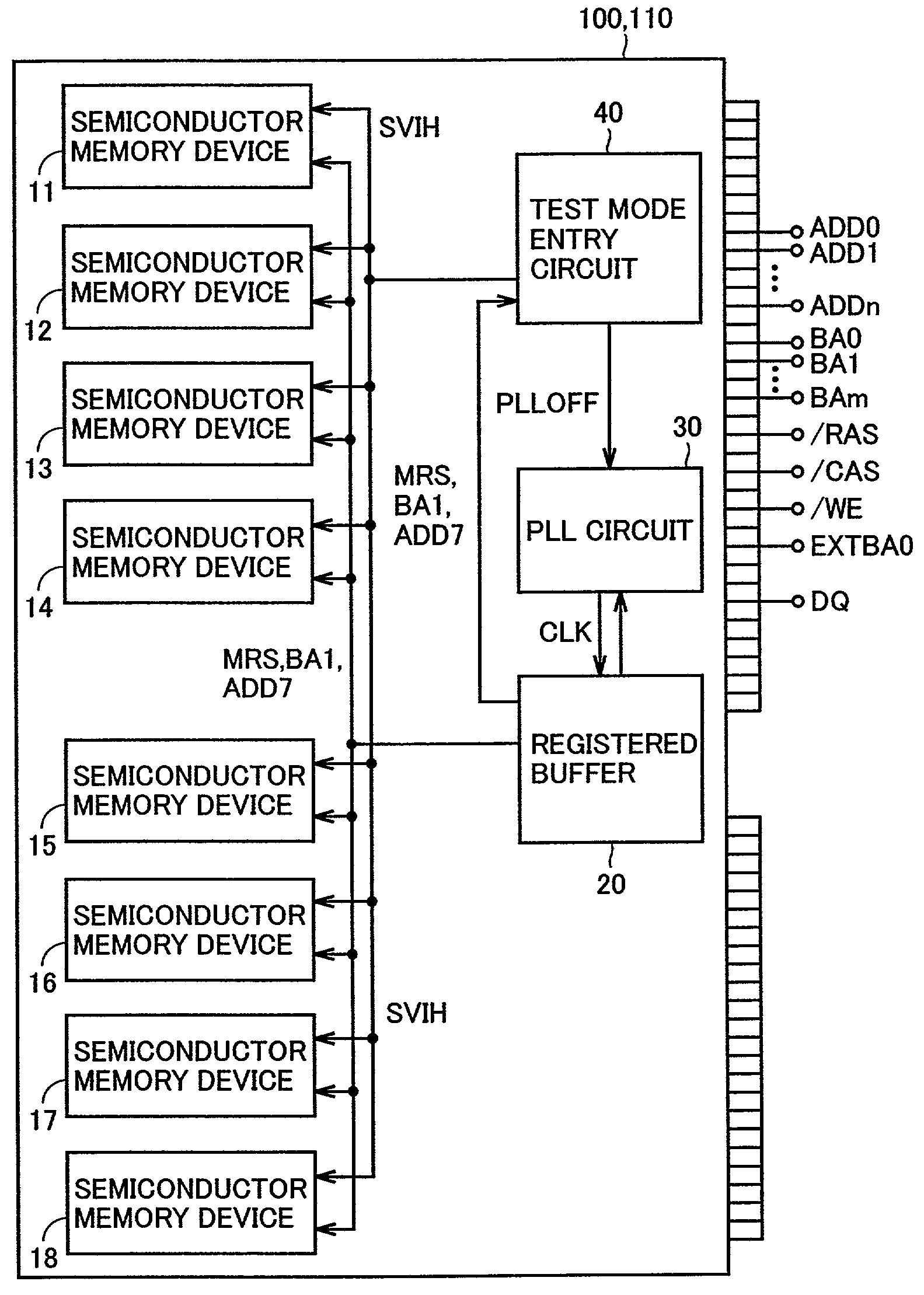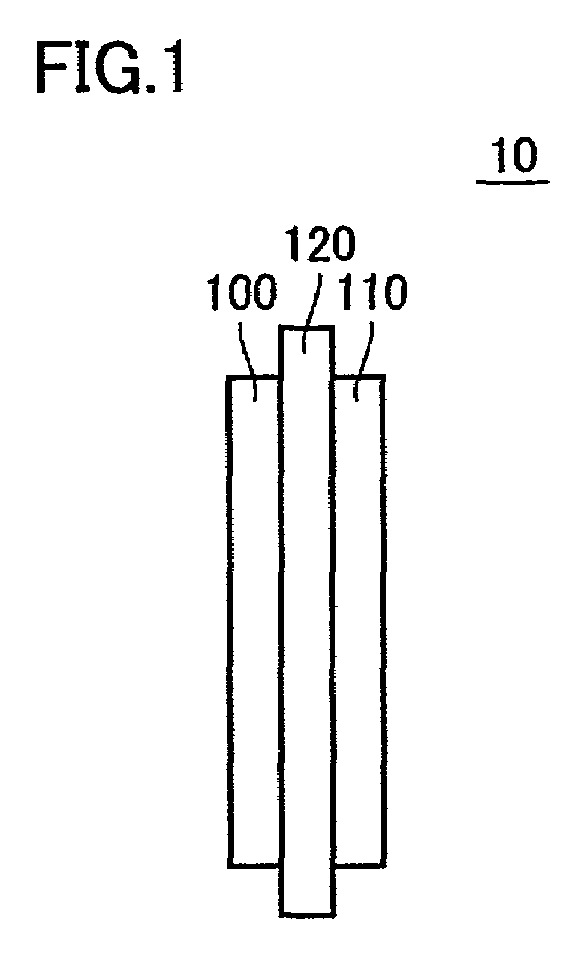Semiconductor module including semiconductor memory device shiftable to test mode as well as semiconductor memory device used therein
a semiconductor memory and module technology, applied in the field of semiconductor modules, can solve the problems of inability to detect signal svih, inability to shift each of the drams in the module to the test mode,
- Summary
- Abstract
- Description
- Claims
- Application Information
AI Technical Summary
Benefits of technology
Problems solved by technology
Method used
Image
Examples
first embodiment
[0083]Referring to FIG. 1, a module 10 includes semiconductor modules 100 and 110, and a substrate 120. Semiconductor modules 100 and 110 are arranged on the opposite sides of substrate 120, respectively. Module 10 is an RDIMM, and semiconductor modules 100 and 110 include a plurality of DRAMs forming the RDIMM.
[0084]Referring to FIG. 2, each of semiconductor modules 100 and 110 according to the first embodiment includes semiconductor memory devices 11–18, a registered buffer 20, a PLL circuit 30 and a test mode entry circuit 40.
[0085]Each of semiconductor memory devices 11–18 is formed of a DRAM including a plurality of memory cells, and stores data. Registered buffer 20 receives address signals ADD0–ADDn, bank address signals BA0–BAm, row address strobe signal / RAS, column address strobe signal / CAS, write enable signal / WE and data from external terminals, and converts the received address signals ADD0–ADDn and others to predetermined voltage levels for use in semiconductor modul...
second embodiment
[0134]Referring to FIG. 8, semiconductor modules 100A and 110A of a second embodiment differ from semiconductor modules 100 and 110 of the first embodiment in that a signal generating circuit 40A is employed instead of test mode entry circuit 40. The structures other than the above are the same. However, registered buffer 20 has the same function as that in the first embodiment, and additionally has a function of directly supplying signal EXTBA0, which is formed of the voltage level higher than the voltage level in the normal operating range, to semiconductor memory devices 11–18 without converting signal EXTBA0 to the voltage level for use in the module. Semiconductor modules 100A and 110A are used in module 10 instead of semiconductor modules 100 and 110 shown in FIG. 1, and form the RDIMM.
[0135]Referring to FIG. 9, signal generating circuit 40A is formed of an AND gate 400. AND gate 400 performs the logical AND among signal MRS, bank address signal BA1 and address signal ADD7 sup...
third embodiment
[0150]Referring to FIG. 12, semiconductor modules 100B and 110B according to a third embodiment differ from semiconductor modules 100 and 110 in that test mode entry circuit 40 is not employed, and semiconductor memory devices 11A–18A are employed instead of semiconductor memory devices 11–18. Structures other than the above are the same as those of semiconductor modules 100 and 110. However, semiconductor modules 100B and 110B are not externally supplied with signal EXTBA0 formed of a high voltage level. When shifting to the test mode, registered buffer 20 outputs an address signal ADD9 to semiconductor memory devices 11A–18A in addition to signal MRS, bank address signal BA1 and address signal ADD7. Semiconductor modules 100B and 110B are used in module 10 instead of semiconductor modules 100 and 110 shown in FIG. 1, and form the RDIMM.
[0151]Referring to FIG. 13, semiconductor memory devices 11A–18A differ from semiconductor memory devices 11–18 in that mode circuit 280 is replace...
PUM
 Login to View More
Login to View More Abstract
Description
Claims
Application Information
 Login to View More
Login to View More - R&D
- Intellectual Property
- Life Sciences
- Materials
- Tech Scout
- Unparalleled Data Quality
- Higher Quality Content
- 60% Fewer Hallucinations
Browse by: Latest US Patents, China's latest patents, Technical Efficacy Thesaurus, Application Domain, Technology Topic, Popular Technical Reports.
© 2025 PatSnap. All rights reserved.Legal|Privacy policy|Modern Slavery Act Transparency Statement|Sitemap|About US| Contact US: help@patsnap.com



